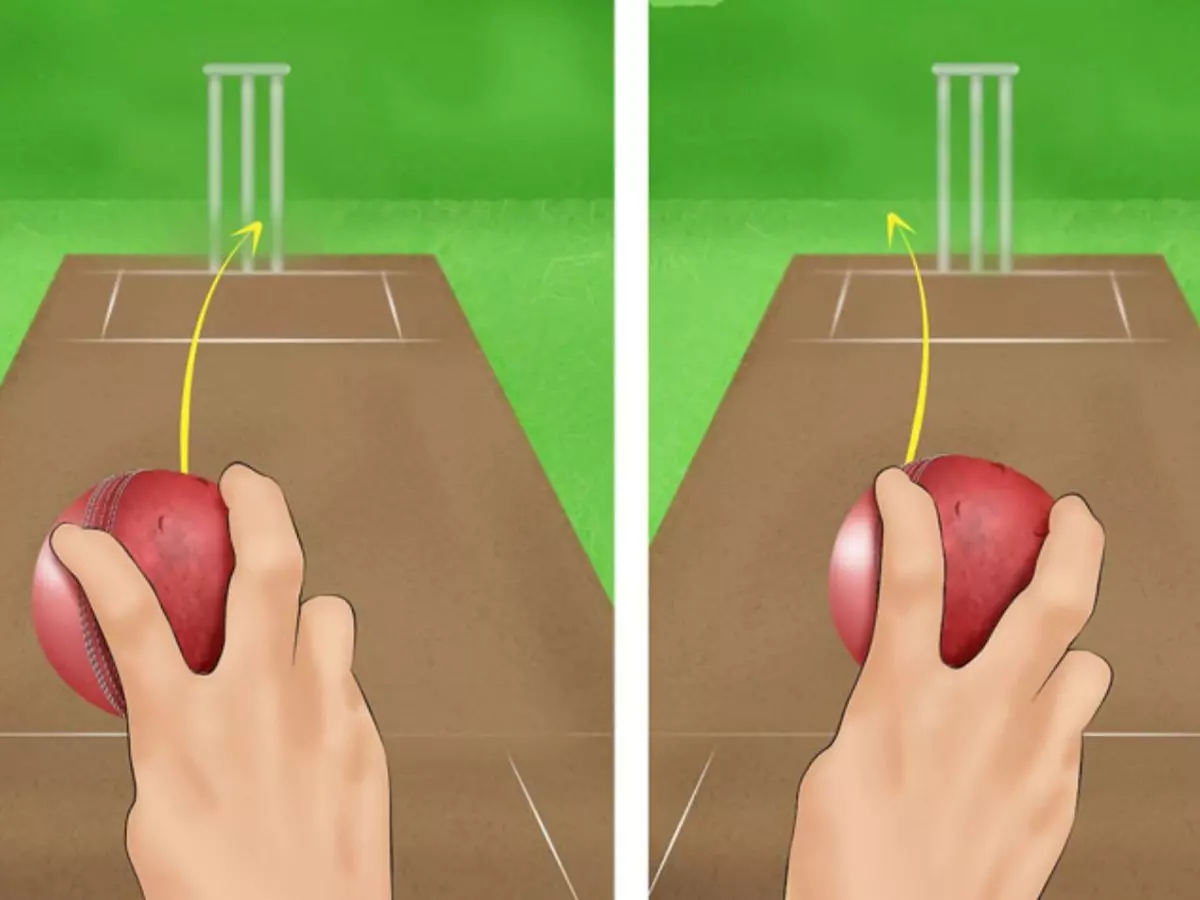From Basics to Advanced: Everything You Need to Know About Reverse Swing
Reverse swing in cricket is a skill that every bowler, whether beginner or advanced, strives to master. It is one of the most exciting aspects of fast bowling and can be the difference between taking wickets and bowling a fruitless spell. Understanding reverse swing can elevate your game, but before we jump into advanced techniques, let’s start with the basics.
What is Reverse Swing in Cricket?
Reverse swing refers to the movement of the cricket ball in the opposite direction of its conventional swing, typically at higher speeds. While conventional swing happens when the ball is moving through the air, reverse swing occurs when the ball starts to deviate later in its flight, and the speed of the ball is a critical factor. In simple terms, when a bowler delivers the ball at a speed exceeding 85 mph, it tends to reverse swing.
To understand reverse swing fully, it’s essential to know how normal swing works. Conventional swing is achieved when a bowler releases the ball in such a way that one side of the ball is shiny and the other is rough. The shiny side faces the direction of the swing, and the rough side creates drag, causing the ball to curve.
However, reverse swing is a different beast. It occurs when the ball is older and the seam is used to its advantage. The bowler must use the seam and air pressure to make the ball swing unpredictably, even after it has passed the typical swing phase.
How Does Reverse Swing Work?
In reverse swing, the ball moves in the opposite direction to what you would expect. When a bowler bowls at high speeds (around 85 mph or more), the ball starts to behave differently. The rough side of the ball generates more friction, which causes the ball to “drag” through the air, while the shiny side of the ball helps it glide.
This difference in friction makes the ball swing in an unexpected direction, often late in the delivery. This late swing makes it particularly dangerous, as it’s difficult for the batter to adjust in time.
Why Is Reverse Swing Important in Cricket?
Reverse swing is a weapon in a bowler’s arsenal that can take wickets when conditions seem unfavorable for conventional swing. It’s especially effective in the later stages of a match when the ball is old, and the pitch may not offer much assistance. Reverse swing allows a bowler to generate movement even on seemingly flat wickets.
It can surprise the batsman, who might have already adjusted to conventional swing, making them more vulnerable to mistakes. A bowler with reverse swing becomes even more dangerous in these circumstances, as the ball can move late, making it hard for the batsman to judge its trajectory.
The Mechanics of Reverse Swing: The Art of Bowling
Mastering reverse swing requires understanding the intricate mechanics that make it work. Here are a few key factors that influence how reverse swing happens:
- Ball Condition: The ball needs to be older for reverse swing to occur. The rough side plays a vital role in creating the necessary friction for swing.
- Seam Position: A bowler must use the seam to direct the ball’s movement. The seam should ideally face towards the slip fielders, but the direction of the ball’s swing can change depending on the way the bowler positions the seam.
- Speed: Speed is the most important factor in generating reverse swing. Bowling at speeds of 85 mph or above allows the ball to reverse swing significantly. However, lower speeds will often fail to generate the same kind of movement.
- Humidity and Wind: External conditions such as humidity and wind can also influence how the ball behaves. The drier the conditions, the more likely the ball will reverse swing.
How to Bowl Reverse Swing: Tips and Techniques
Mastering reverse swing takes practice, patience, and skill. Here are some essential tips to help you get started with reverse swing:
1. Focus on Speed
The first step in generating reverse swing is to bowl at high speeds. You must maintain a consistent pace of at least 85 mph. This requires not just speed but also control, as bowling too fast without proper technique will reduce the effectiveness of your reverse swing.
2. Perfect Your Seam Position
The seam’s positioning is critical in reverse swing. To achieve reverse swing, you should angle the seam towards first or second slip. The rough side of the ball will be facing the batsman, and the shiny side will be facing the slip fielders. This allows for the late movement that is characteristic of reverse swing.
3. Control the Ball’s Condition
Maintaining the condition of the ball is crucial. Use the shiny side to your advantage by keeping it well-maintained and polished, while allowing the rough side to wear down. This wear and tear on the rough side generates friction that causes the ball to swing.
4. Learn the Wrist and Finger Position
The wrist and finger position at the point of delivery can impact the movement of the ball. When bowling reverse swing, the wrist should remain firm, and the fingers should be positioned in a way that guides the ball in the right direction.
5. Use the Wind and Conditions
Make use of wind and weather conditions to assist with reverse swing. Wind can help the ball travel further and generate more movement, while dry conditions help with ball wear.
When Does Reverse Swing Become Most Effective?
Reverse swing is most effective during the later stages of a match, especially after the ball has become worn. In these situations, the ball is more likely to deviate unexpectedly, and the bowler can use the reverse swing to their advantage. Some bowlers prefer using reverse swing late in an innings to deceive tired batsmen.
On flat tracks, where conventional swing might not be possible, reverse swing becomes even more crucial. Fast bowlers can rely on this technique to get wickets, even when there’s little movement in the pitch.
Key Bowlers Known for Mastering Reverse Swing
Over the years, several bowlers have been known for their reverse swing expertise. Here are some of the greatest reverse swing bowlers:
- Wasim Akram (Pakistan): Often regarded as one of the best fast bowlers in history, Akram was a master of reverse swing. He could swing the ball both ways, even with an older ball.
- Dale Steyn (South Africa): Steyn’s ability to generate late swing made him one of the most dangerous fast bowlers of his time.
- James Anderson (England): Anderson is known for his ability to reverse swing the ball, particularly in English conditions, where the weather and wear of the ball favor this skill.
- Shane Bond (New Zealand): Bond’s ability to generate reverse swing at high speeds made him a key figure in New Zealand’s bowling attack.
Conclusion: The Power of Reverse Swing
Reverse swing is not just about bowling fast; it’s about controlling the ball, using the conditions, and understanding how to make the ball move unpredictably. It’s a skill that separates the good bowlers from the great ones, and mastering it can make you a potent weapon on any pitch.
FAQs About Reverse Swing
1. What is reverse swing in cricket?
Reverse swing occurs when a fast bowler bowls the ball in such a way that it swings in the opposite direction to conventional swing, particularly when the ball is older.
2. How do you bowl reverse swing?
To bowl reverse swing, focus on speed (85 mph or more), maintain the condition of the ball, and use the seam effectively. The rough side should face the batter, while the shiny side faces the slip fielders.
3. Why does the ball reverse swing?
Reverse swing happens because of the difference in air friction on both sides of the ball. The rough side creates drag, while the shiny side glides, causing the ball to move unpredictably in the air.
4. When does reverse swing work best?
Reverse swing works best in the later stages of a match when the ball is old and worn. It’s also most effective in dry conditions and with high-speed deliveries.
5. How fast do you need to bowl for reverse swing?
A bowler needs to bowl at speeds of at least 85 mph to generate reverse swing effectively.













Post Comment